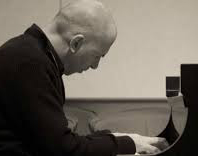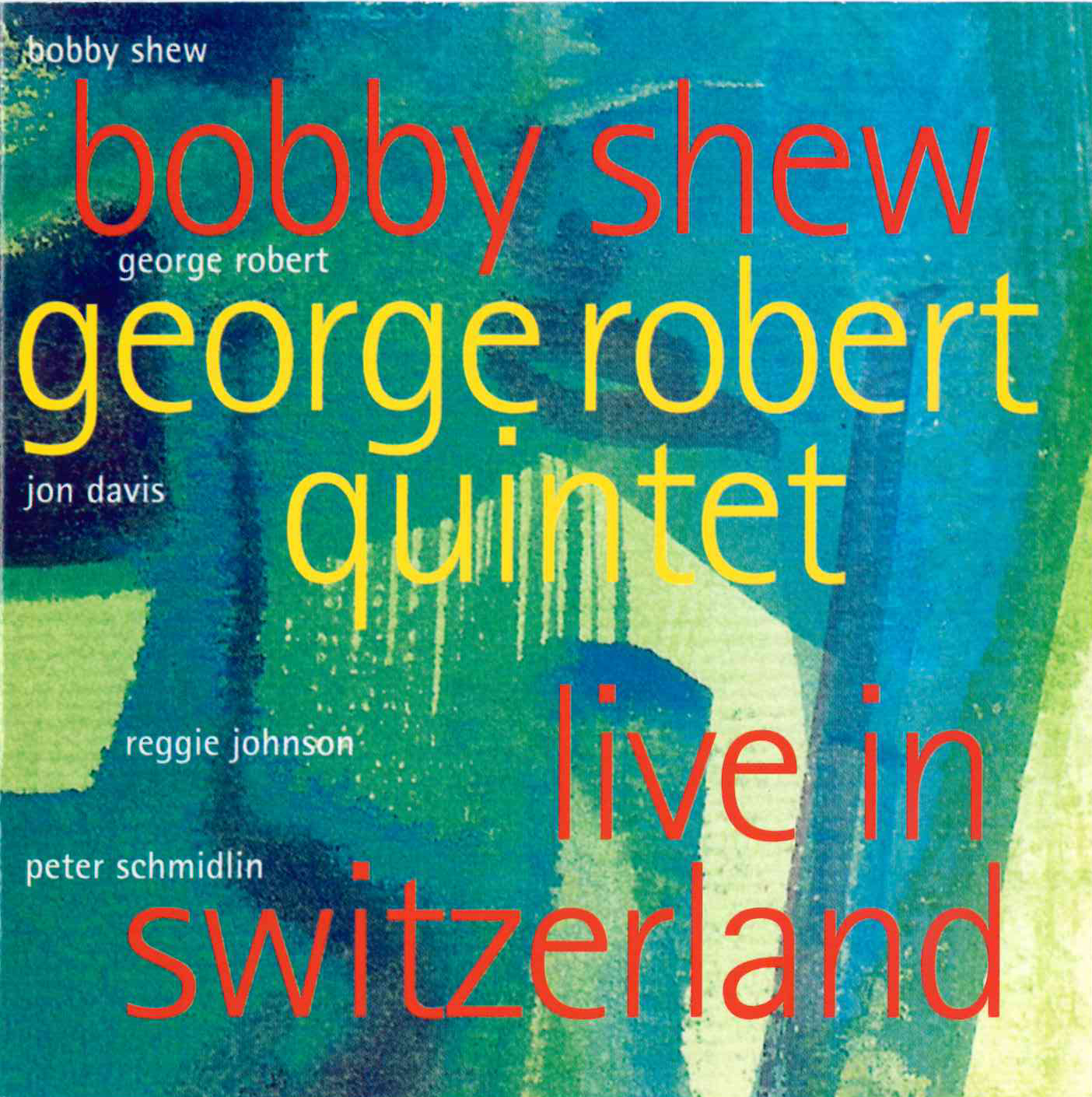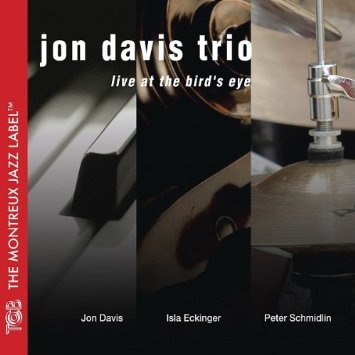Too Good For Words – Jon Davis
Cool, laid-back, and harmonically rich, Too Good For Words is a perfect example of Jon Davis's appealing compositional style. Get inside this piece with four different Solo Piano Arrangements and Piano Comping Voicings. Once you've explored these, you can test your knowledge of this song with another trio version, which joins our Rhythm Section Workshop series with audio tracks for piano, bass, and drums.
- Recording: George Robert - Live In Switzerland
- Recorded on: September 27, 2001
- Label: TCB (22142)
- Concert Key: No key center
- Vocal Range: , to
- Style: Swing (uptempo)
- Trumpet - Bobby Shew
- Alto Sax - George Robert
- Piano - Jon Davis
- Bass - Reggie Johnson
- Drums - Peter Schmidlin
Video
- Jon and bassist Gilles Naturel explore Too Good For Words at the jazzleadsheets.com studio (February 26, 2016).
- Voicings #1: Jon Davis explores different voicing possibilities for his composition TOO GOOD FOR WORDS. Notation for four different voicing approaches available, as well as Solo Piano Arrangements and lead sheets for all instruments. Click on the Jon Davis Trio album cover for videos of Jon's Solo Piano Arrangements.
- Voicings #2
- Voicings #3
- Voicings #4
- Description
- Historical Notes
- Solos
- Piano Corner
- Bass Corner
- Drum Corner
- Guitar Corner
- Inside & Beyond
- Minus You
Several of the chords have certain upper extensions that fit with the melody but do not need to be used in the solos. The A7 in the eighth measure has a ♯5 because that is the melody note; in the solos it can be played with a natural 5th. In the following measure the chord on beat 3 is B11 to fit the 11th in the melody; it can function like a regular B7 for the solos.
For ways in which Jon interprets these changes, click on the Piano Corner tab.
This recording begins with Jon playing the melody by himself; the bass comes in on the B section. Our audio clip begins with the second chorus, where the horns and drums enter. The lead sheet includes the top line of Jon's voicings from the B section of this chorus, over which the horns improvise (as indicated by "light horn fills").
Solo Piano Arrangements
The four Solo Piano Arrangements present different interpretations of the A section melody, followed by a melody on the B section vamp based on the coda. All but the fourth contain the roots in the voicings on the A section. The first focuses on an ascending inner-voice line (E♭ to E to F♯) in the first four-measure phrase; the B section has the classic Miles Davis So What voicings, mostly fourths with a third on top. The second Solo Piano Arrangement is similar, but expanded with the roots an octave lower and the B section higher; the third lacks the ascending line, descending in the beginning and with the B section entirely in fourths. The fourth Solo Piano Arrangement is rootless, with the melody doubled an octave higher and simple 3-note fourth-based voicings in the left hand which continue into the B section; the right hand stays on a higher C during this section. The first and fourth of these Solo Piano Arrangements are based on the two repeats of the "in" head on the trio recording (click on the second album cover for more details).
Piano Comping Voicings
The four Piano Comping Voicings arrangements are basic "footballs" (whole notes) showing some paths through the changes for a setting with bass and a horn (or other) soloist. They are all in slightly different registers; the fourth one is based around the same ascending line as in the first of the Solo Piano Arrangements. The B sections of these Piano Comping Voicings all contain a scalar motion: the first and third are diatonic, the second uses F♯ instead of F♮ for a "Lydian dominant" tonality, and the fourth takes the So What voicing structure and transposes it chromatically up and down. The A7 and B7 in the eighth and ninth measures of the A section are voiced in a way that would not fit with the melody; go to the Description tab for more details about these chords.
Related Songs
Email Send Too Good For Words to a friend
- Recording: Jon Davis - Live At The Bird's Eye
- Recorded on: November 12, 2011
- Label: TCB (33302)
- Concert Key: No key center
- Vocal Range: , to
- Style: Swing (uptempo)
- Piano - Jon Davis
- Bass - Isla Eckinger
- Drums - Peter Schmidlin
Video
- Jon and bassist Gilles Naturel explore Too Good For Words at the jazzleadsheets.com studio (February 26, 2016).
- Jon Davis plays his Too Good For Words Solo Piano Arrangement #1 at the jazzleadsheets.com studio. This first arrangement focuses on an ascending inner-voice line (E♭ to E to F♯) in the first four-measure phrase; the B section has the classic Miles Davis So What voicings, mostly fourths with a third on top.
- Jon's Solo Piano Arrangement #2: it's similar to #1 but expanded with the roots an octave lower and the B section higher.
- Solo Piano Arrangement #3 is lacking the ascending line of Arrangements 1 & 2; it descends in the beginning and the B section is entirely in fourths.
- Solo Piano Arrangement #4 is rootless, with the melody doubled an octave higher and simple 3-note fourth-based voicings in the left hand which continue into the B section; the right hand stays on a higher C during this section. Check out Jon's voicings: click on the George Robert album cover above left.
- Description
- Historical Notes
- Solos
- Piano Corner
- Bass Corner
- Drum Corner
- Guitar Corner
- Inside & Beyond
- Minus You
Note that the lead sheets, Solo Piano Arrangements and Piano Comping Voicings for both albums are identical.
From Jon's liner notes: "One of the most gratifying aspects of pursuing this music, Jazz, is how universal it truly is. Whether at home in NY, or traveling around the world, one can get on the bandstand with perfect strangers, perhaps not understanding each other's "language," call out a tune, a key, and create music that bonds the players in an amazing, and even a profound way.
"Some years ago (if my diminishing memory serves me, late 90s), I had the fortunate opportunity to play with a truly inspiring vocalist, Teri Thornton. She brought me along to accompany her on a weeklong gig at a wonderful club called Marian's in Berne, Switzerland. I walked on the bandstand, shook hands with Peter Schmidlin and Isla Eckinger, meeting them for the first time right there, and played a few tunes before Teri came up.
"I remember getting off the bandstand after that first set, smiling, knowing that that was one of "those" times . . . from the first chorus, the trio seemed to play effortlessly, with that natural "swing thing" as if we'd been playing together for years.
"Quite a few years had gone by until we finally reunited for a quick weekend at the Bird's Eye Jazz Club in Basel, also Switzerland, and I'm delighted to have captured some of that feeling once again. I hope you enjoy . . . . Thanks for listening . . . . JD"
Solo Piano Arrangements
The four Solo Piano Arrangements present different interpretations of the A section melody, followed by a melody on the B section vamp based on the coda. All but the fourth contain the roots in the voicings on the A section. The first focuses on an ascending inner-voice line (E♭ to E to F♯) in the first four-measure phrase; the B section has the classic Miles Davis So What voicings, mostly fourths with a third on top. The second Solo Piano Arrangement is similar, but expanded with the roots an octave lower and the B section higher; the third lacks the ascending line, descending in the beginning and with the B section entirely in fourths. The fourth Solo Piano Arrangement is rootless, with the melody doubled an octave higher and simple 3-note fourth-based voicings in the left hand which continue into the B section; the right hand stays on a higher C during this section. The first and fourth of these Solo Piano Arrangements are based on the two repeats of the "in" head on the trio recording (click on the second album cover for more details).
Piano Comping Voicings
The four Piano Comping Voicings arrangements are basic "footballs" (whole notes) showing some paths through the changes for a setting with bass and a horn (or other) soloist. They are all in slightly different registers; the fourth one is based around the same ascending line as in the first of the Solo Piano Arrangements. The B sections of these Piano Comping Voicings all contain a scalar motion: the first and third are diatonic, the second uses F♯ instead of F♮ for a "Lydian dominant" tonality, and the fourth takes the So What voicing structure and transposes it chromatically up and down. The A7 and B7 in the eighth and ninth measures of the A section are voiced in a way that would not fit with the melody; go to the Description tab for more details about these chords.
Related Songs
Email Send Too Good For Words to a friend
- Recording: Jon Davis - Jon Davis Trio
- Recorded on: September 4, 2010
- Label: jazzleadsheets.com (JLS 1043)
- Concert Key: No key center
- Vocal Range: , to
- Style: Swing (medium up)
- Piano - Jon Davis
- Bass - Daryl Johns
- Drums - Steve Johns
Video
- Description
- Historical Notes
- Solos
- Piano Corner
- Bass Corner
- Drum Corner
- Guitar Corner
- Inside & Beyond
- Minus You
It was recorded at Rudy Van Gelder's studio with enough isolation to allow for Minus You audio tracks for piano, bass & drums, so we've added it to our Rhythm Section Workshop and there are individual parts for each instrument.
The piano part has the A section melody as it appears in the lead sheet. Voicings are shown for the first two measures of the B section, as an example of a way to begin this section. Bass rhythms from the first B section on the in head are shown here too, as well as those of the first solo chorus in the B section of the solo form (D on the part). The coda vamps C7sus for the equivalent of seven 8-measure phrases; on the piano part the bass line for the sixth of these phrases is shown, as well as Jon's right hand voicings (and all bass rhythms) for the last phrase. These piano figures are the same as the coda shown on the lead sheet.
In both the bass and drum parts, the melody is notated as Jon plays it the first time through the in head on the recording. The bass part shows drum rhythms for the B section of the head. The last two 8-measure phrases of the coda have the piano melody from the recording, with drum rhythms on the last phrase.
Like the piano part, the drum part shows the bass rhythms for the B section on both the head and solos. The drum part also has the piano melody for the last two phrases of the coda, with bass rhythms added starting in the third measure of the last phrase.
A 3-page piano Melody Transcription is also available showing all melody lines and embellishments Jon plays on the in and out heads as well as the last two phrases of the coda. Jon's playing on the second repeat of the in head, as well as the two out heads, is very different from the first in head which is notated in the bass and drum parts. Bassists and drummers playing with the Minus You tracks should listen closely to the piano on these other repeats of the head to really lock in and interact; if they want to know exactly what's going on here they should read the Melody Transcription.
"That actually has a meaningful memory. I remember this well, it's one of those things you remember where you were, and you'll know what I mean when I tell you the story. I wanted to write a concise tune that combined Trane changes that weren't obvious (which is why they're a measure each instead of half a measure) with a modal section à la Kind Of Blue. It was very specific. I was playing around with it and, unlike usual, this one just came together--two hours, beginning to end. It was one of those erie moments where I was thinking to myself, 'Wow, that was easy. This sounds cool.' It was in a different key 'cause I was playing a lot of bass then, so it was in a bass-friendly key. But I moved it back to un-bass-friendly keys. Anyway, the tune came out easily. Then I went into my room and on my answer box my mother had left a message that Miles had just died. He was kind of like, dying, as this was happening. I just remember thinking "Wow, that's eerie." He was in the hospital and within that several-hour period, I guess, the news got out that he had died. The title, in spite of being a little corny, was a reference to Trane and Miles."
This 20-bar tune gives bassists an opportunity to work on their 2-feel, walking, and Latin playing while playing along with the Minus Bass track. Though a rarity today, the bass and drums stay in a 2-feel at the beginning of the piano solo, only going into a 4-feel after two choruses—a great way to create tension and release (listen to recordings of the Ahmad Jamal Trio if you haven't heard this kind of playing before). This tune also features a three-chorus bass solo.
The form of Too Good For Words features 12 bars of swing followed by 8 bars of Latin. On this recording, the drummer plays a loose 1-feel for the A sections of the melody and an Elvin Jones style Latin groove for the Latin section. The solo section retains the same form as the melody, however you may want to vary the swing feel during the C sections as you play along with the Minus Drums track.
This piece is great for practicing holding together a semi-irregular song form that also changes feels. Playing the right feel at the right time as well as knowing and keeping the form of the song is one of the most important roles of a drummer and the rhythm section as a unit. Without the form in place, the soloist will not have a firm foundation upon which to build.
mp3 The form of this recording is:
-- melody 2 times
-- piano solo 6 choruses (2 choruses 2-feel at C, 4 choruses 4-feel at C)
-- bass solo 3 choruses
-- piano/drums exchanges 2 choruses ([1] [2])
-- out melody 2 times
-- coda: seven 8-measure phrases of vamp
mp3 minus Piano
-- count off sets up the melody
-- play the melody 2 times
-- solo 6 choruses
-- comp for the bass solo 3 choruses
-- exchanges with drums 2 choruses ([1] [2]) - comp on the drum solo B sections
-- play the out melody 2 times
-- solo on the coda and play the chords on the last 8-measure phrase
mp3 minus Bass
-- count off sets up the melody
-- 1-feel and Latin groove for the melody 2 times
-- piano solo 6 choruses
2 choruses 2-feel at C
4 choruses walk at C
-- solo 3 choruses
-- walk and play figures for the piano/drums exchanges 2 choruses ([1] [2])
-- 1-feel and Latin groove for the out melody 2 times
-- continue Latin groove for coda
mp3 minus Drums - sticks throughout
-- count off sets up the melody
-- 1-feel and Latin groove for the melody 2 times
-- comp for the piano solo 6 choruses
2 choruses 2-feel at C
4 choruses 4-feel at C
-- comp for the bass solo 3 choruses
-- 1-feel and Latin groove for the out melody 2 times
-- continue Latin groove for coda
Related Songs
Email Send Too Good For Words to a friend

Jon Davis
born on July 22, 1957
Jon Davis is a pianist and composer based in New York. He has performed with and contributed compositions to many of the top jazz musicians worldwide throughout his career, which has spanned over 35 years, and has recorded several albums as a leader. Jon took up piano and guitar as a young teenager; he was inspired to play jazz after hearing records of Red Garland and Miles Davis. He briefly studied with Lennie Tristano then attended New England Conservatory, where his teachers included Ran Blake, Jaki Byard, and Madam Chaloff. After six months, he left to begin gigging around Boston. Read more...





